A woman out running or walking is a sight so common on roads and footpaths that it goes unnoticed. When Ashling Murphy pulled on her blue runners to jog along the Grand Canal on a bright January afternoon, she surely did not envisage her life would be brutally cut short by a man she had never met.
That man, Jozef Puska, was on Thursday convicted of her murder. But a question which must plague Ashling’s devastated family and many others remains. Why? Why did this man murder this smart, talented, beautiful and much-loved young woman in an apparently random attack?
Almost two years later, the answer may be known only to Puska.
The 33-year-old native of Slovakia, who has lived in Mucklagh, Co Offaly, with his wife and five children since 2015, sat throughout the trial alongside an interpreter who quietly translated the proceedings for him.
Dressed mainly in grey clothing and with shoulder length dark hair, his expression betrayed little, except for occasional nods and smiles to members of his family sitting at the rear of the courtroom.
He denied murdering Ashling at Cappincur on January 12th, 2022, but the evidence against him, including a confession, DNA, CCTV, witnesses, even some of his own testimony, was overwhelming.
Before the trial opened, Puska suffered a hammer blow when Mr Justice Tony Hunt rejected his lawyers arguments that admissions to murder made voluntarily by him in St James’s Hospital, Dublin, two days after Ashling’s body was found, could not go before the jury on grounds including there was no assessment as to whether Puska was fit to be interviewed.
Puska could not have been clearer in those admissions, made in the presence of gardaí and via interpreter Miroslav Sedlacek, who was on speaker phone.
After Puska was told by Det Sgt Brian Jennings he was a “person of interest” in the murder investigation, Sedlacek said Puska asked him to tell the Garda “exactly what I tell you, that I did it, that I killed her but to tell him also that I did not do it intentionally, that I didn’t want to do it and that I’m very sorry I did it, that it happened”.
Sedlacek described Puska as “in very low spirits, even desperate” after making that confession.
Jennings wrote down that Puska had said, “I did it. I murdered. I am the murderer,” and cautioned Puska who, upset and crying, signed the note. Sgt Pamela Nugent, who was at the hospital to execute a warrant to seize Puska’s possessions and take a blood sample, also testified Puska said he was the murderer.
Minutes later, Puska made another voluntary admission, this time in English, to Det Garda Fergus Hogan, who stayed on in the hospital room with him after the other gardaí stepped out. Hogan said Puska put his fingers to his lips, as if he had told the girl “to be quiet” and said: “I tell her go, I won’t hurt you, when she pass, I cut her neck, she panic, I panic.”
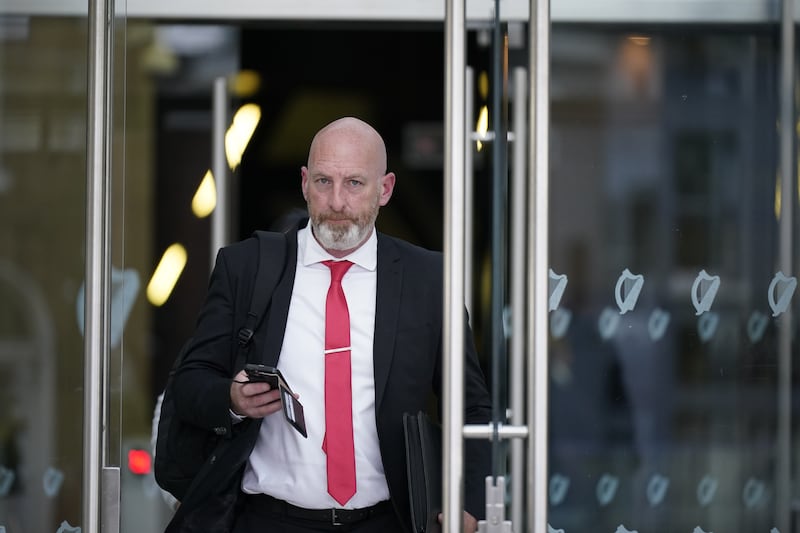
At that point, gardaí had not publicly released information on how Ashling Murphy had died.
Puska had been brought to the hospital around noon the previous day from his parents’ apartment in Crumlin, Dublin, claiming he was stabbed in Blanchardstown on January 12th, and with three puncture wounds to the abdomen. Hogan said he pointed to his stomach and said: “I do this.”
Those admissions were a core part of the prosecution case.
Senior counsel Anne-Marie Lawlor, when outlining the prosecution case to the jury on October 17th, said people may react with great sympathy in cases of violent death and, when it involves a young woman, a “visceral revulsion” can be well understood.
The evidence, she stressed, would focus on what the prosecution contended Puska did and must be assessed from a “cold, clinical perspective”, not from a position of sympathy for the victim.
The trial proceeded on that basis, focusing on Puska’s actions, but there were poignant glimpses of the young woman whose life he had ended.
Having graduated from Mary Immaculate College in October 2021, Murphy was teaching in the national school in Durrow, a short drive from her home in Tullamore, on the day of her death.
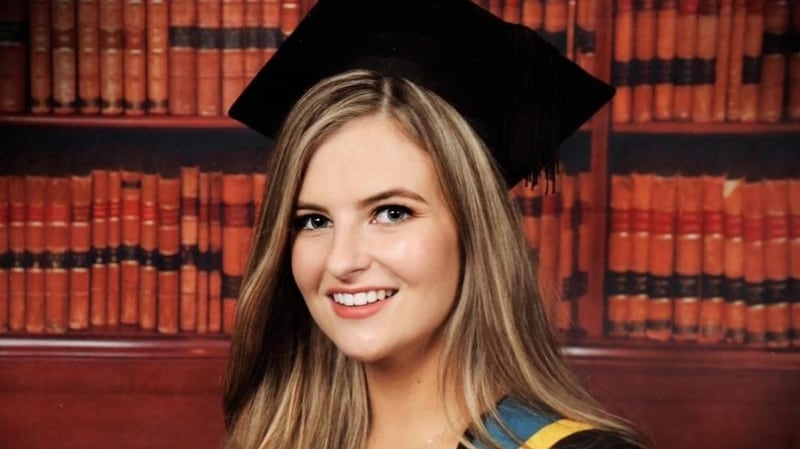
She played camogie with her local GAA club, Kilcormac/Killoughley, and parked her Seat Cordoba in Daingean Road car park after school before starting her jog along the canal at about 2.51pm as part of training for an upcoming match. The evidence indicated she was attacked just 30 minutes later.
Her blue runners, her pink woollen hat, and her sunglasses, all found near the crime scene, were an insight into a stylish young woman. Her body was clad in her blue and green GAA club top, blue leggings and a bloodstained white T-shirt. A necklace with the word “Ashling” was around her neck and her toenails were varnished pink.
This was the “smiley, friendly, chatty” young woman who exchanged a few words with Anne Marie Kelly after bending to pet her dog during her last journey along the canal footpath.
Her family and long-time boyfriend Ryan Casey shed tears as a pathologist outlined in detail wounds A to K, the 11 stab wounds that severed Ashling’s voice box and caused so much blood loss her heart stopped. There were more tears as the pathologist said injuries to her fingers could be defensive, suggesting she fought hard for her life.
Jenna Stack and her friend Aoife Marron were important prosecution witnesses. They left Daingean Road car park around 3.12pm on January 12th for a run along the canal. They had gone about 2km when they heard what Stack described as loud rustling sounds, “like someone was struggling”, from a hedgerow.
Stack, who seconds earlier noticed a bike with “luminous” green markings pushed into the hedgerow, saw the back of a jacket through the hedge and asked: “Are you okay?”
A man turned as if he was “crouched” over something, she could see his face and a girl’s legs kicking, Stack said. Asked what he was doing, he told her through “gritted teeth” to “get away”.
It was “terrifying”, she said, she could see the girl “kicking so hard ... using whatever part of her body she could to get help”.
Believing the man was going to rape the girl, Stack said she told him she was going to phone the guards although neither woman had phones with them. Fearing the man was going to come out of the hedgerow, the frightened women fled to get help.
It was during Stack’s evidence that the first indications of the defence case emerged.
Puska’s senior counsel Michael Bowman told a dubious Stack his client had instructed he was “trying to assist” Ashling.
“No, he could have asked us for help,” Stack said.
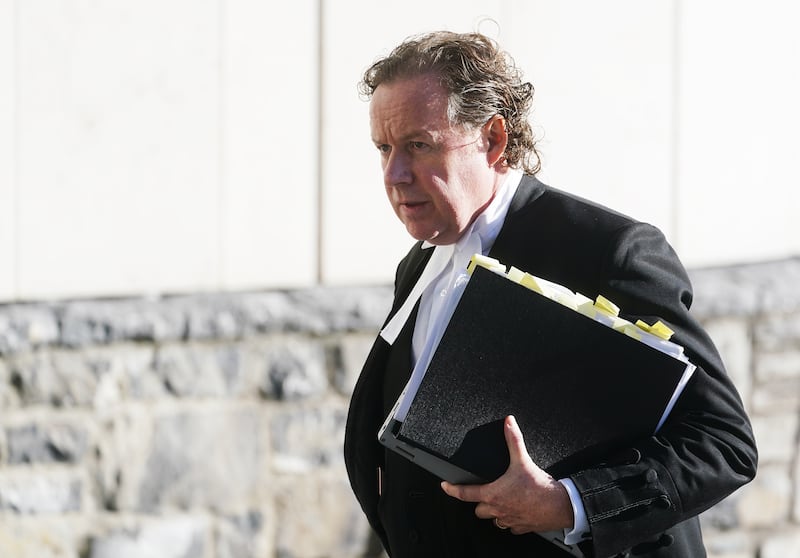
When Bowman suggested Puska did not intend to be aggressive and shouted because he was in pain after pulling his leg on briars, Stack said that was not her recollection and described Murphy as “completely distressed”.
Judge Hunt made clear during legal argument this ‘Good Samaritan’ defence had to be based on evidence, not “instructions” to counsel. That created the expectation Puska would testify and also lead to the prosecution putting data from Murphy’s Fitbit app into evidence.
The Fitbit data, including timings concerning when Ashling Murphy’s heartrate stopped on January 12th, was disclosed to the defence a year earlier but the prosecution, so as not to cause unnecessary distress to the family, had not planned to put it into evidence.
Lawlor noted, during interviews with gardaí after his arrest on January 18th 2022 on suspicion of Murphy’s murder, Puska retracted the admissions he made in hospital.
Because he was now apparently suggesting he came upon an injured victim, the prosecution wanted to introduce the Fitbit data, she said. It showed Murphy had a consistent heart rate for a time after she began to exercise, her heart rate elevated very considerably about 3.21pm and, a few minutes later, there was no heart rate at all.
Allowing for a plus and minus range of 10 per cent, the data was significant in terms of timings when assessed against other evidence, the prosecution argued. The defence maintained it was unreliable.
When the court was shown CCTV of Ashling Murphy on her last journey along the canal, members of her family became particularly upset.
That prompted the judge to voice concern, just before Puska gave evidence, about the jury witnessing emotional reactions. Ashling’s parents went to the overflow court to watch Puska’s evidence via video link while her brother and sister remained in the trial court, sitting stony-faced just feet from him.
On any checklist of necessary or desirable evidence for a murder conviction, the evidence produced against Puska scored high.
Confession? Check.
There was nothing ambiguous about Puska’s stark admission in hospital on January 14th to murder.
Evidence from a medical expert for the defence that his medication could have had an impact on his making that admission was dismissed by Prof Michael Ryan, an expert in pharmacology, who had “never heard” of anyone confessing to murder on the basis of there being a small dose of Oxycodone, a pain-reliving opiate, still in their system when he made the admission.
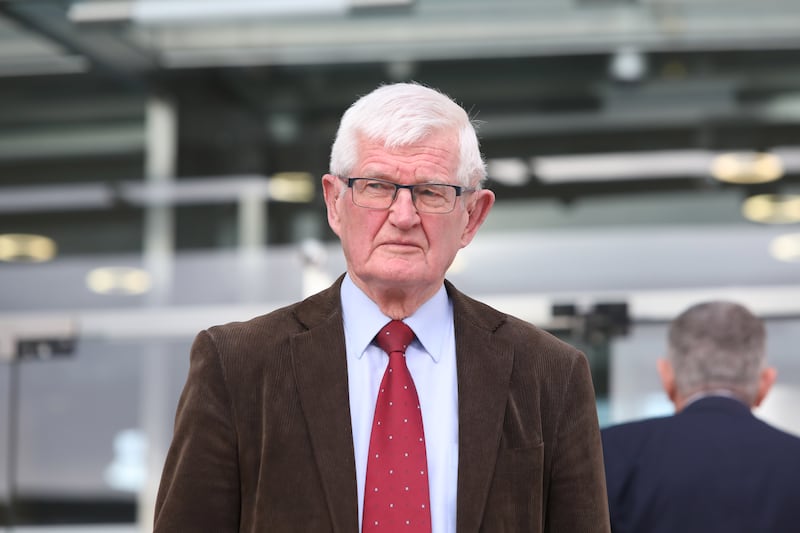
What Puska did not say was also telling. In recorded interviews in Tullamore Garda station on January 18th, while detained on suspicion of Murphy’s murder, he was cautioned inferences might be drawn if he failed to explain the presence of his DNA under Murphy’s fingernails and of his bike near the murder scene. While inferences alone could not convict him, they could be used as corroborative evidence, he was told but offered no explanation.
Eyewitnesses? Check.
Jenna Stack’s evidence was strong in placing Puska and his bike at the crime scene. When Stack and Marron ran for help, they met two Waterways Ireland workers at Digby Bridge who Marron described as not particularly responsive to their concerns about what they had seen. One man testified his first thought was “couples things go on here” but his concern increased and both workers went to the scene. In the interim, Marron borrowed a phone from a man who lived near Digby Bridge and gardaí were contacted.
Enda Molloy, out cycling along the canal, reacted immediately on hearing the women’s “frantic” conversation about someone being attacked. He cycled back to investigate, stopped when he saw the bike with green markings and rang gardaí at 3.31pm after seeing an apparently motionless woman on her back in a ditch overgrown with briars and brambles.
Inconsistencies and lies? Check.
The fact Puska’s hands and face were covered in red scratches puzzled Garda Conor Newman and Sgt Paul McDonnell from Blanchardstown station, who, while investigating a stabbing incident in Blanchardstown on January 12th, went to see Puska in hospital on the 13th. The scratches were inconsistent with Puska being stabbed in Blanchardstown, the gardaí felt and also noted he had travelled from Tullamore on the 12th and there were inconsistencies in his account of his movements.
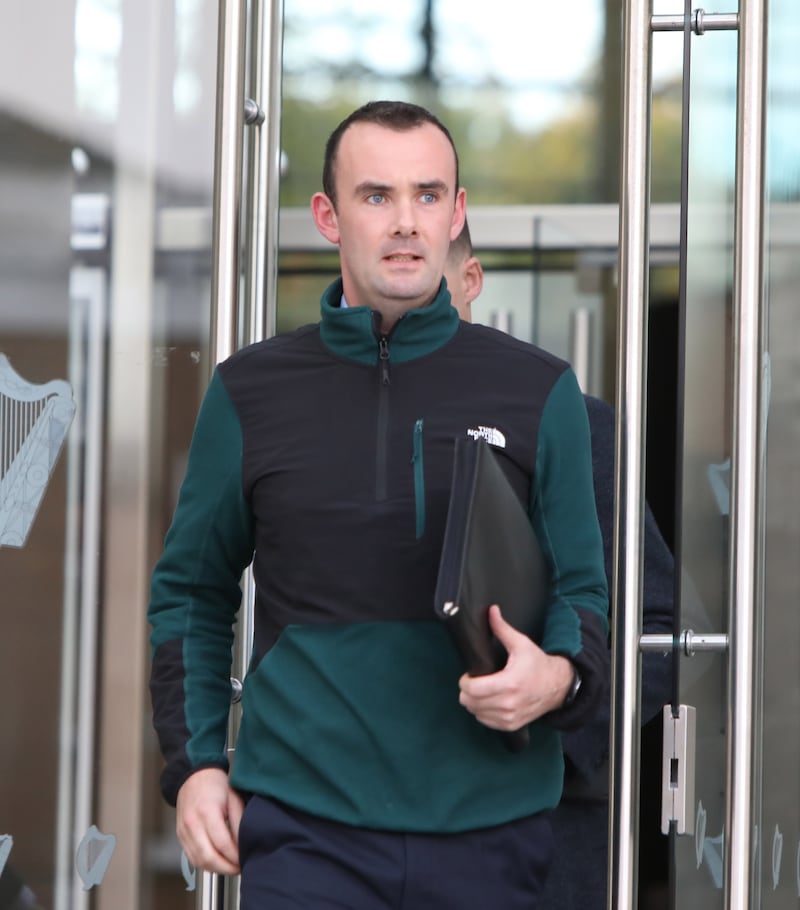
Their superior officer, Det Inspector Shane McCartan, contacted the investigation team in Tullamore after concluding there were “a lot of pieces of a jigsaw puzzle that couldn’t be put together”.
Puska’s evidence that he was attacked by a mystery man wearing a face-mask when cycling along the canal on January 12th, that the same man shortly afterwards attacked Ashling Murphy before fleeing the scene, that Puska spent three to four hours lying in a ditch unwell, possibly unconscious, before making his way in darkness out of it, appeared inconsistent with witness and other evidence.
Under cross-examination by Lawlor, Puska admitted he had told lies about some matters, including being stabbed in Blanchardstown. Lawlor put to him he had “concocted more lies” and she elicited a startling admission he asked his family to burn the clothes he wore on January 12th.
CCTV? Check.
Gardaí harvested 25,000 hours of CCTV footage from which they elicited clips of Puska cycling around Tullamore between 12.25pm and 2.05pm on January 12th, apparently following two different women. Beata Borowska was unaware of him but Anne Marie Kelly believed he was following her and said he had made her uncomfortable.
There were no CCTV cameras near where Ashling Murphy was attacked but CCTV showed a person, whom the prosecution argued was Puska, coming back into Tullamore about 8.55pm. Rotislav Pokuta, a friend of Puska’s, described him as looking as if he had been in a fight when he came to Pokuta’s home seeking a lift to Mucklagh. He did not want to talk too much and seemed “very scared”, Pokuta said.
CCTV showed an apparently uninjured Puska and his parents’ entering their Crumlin apartment late that night and Puska being taken by ambulance from there to St James’s about noon on January 13th.
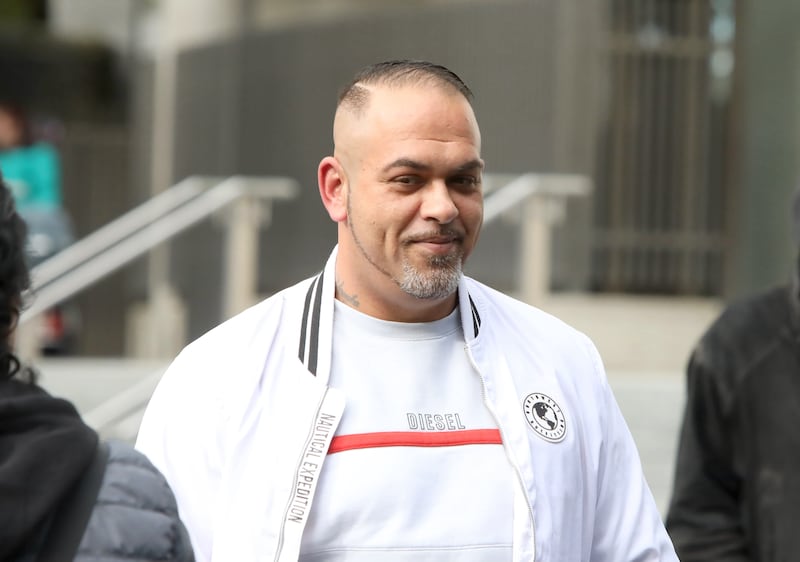
DNA? Check.
There was damning evidence a male DNA profile obtained from material taken from under Ashling Murphy’s fingernails matched two other profiles of Puska. Forensic scientist Dr Lorna Flanagan said the likelihood of it matching someone else was one in 14,000 and she would not expect DNA to transfer from under a fingernail without there being “more than social contact”.
In his evidence, Puska said Murphy touched his hand but she was wearing gloves and it was “most strange” his DNA was under her fingernails. That, Lawlor acidly remarked, was not the only strange thing. No gloves were found.
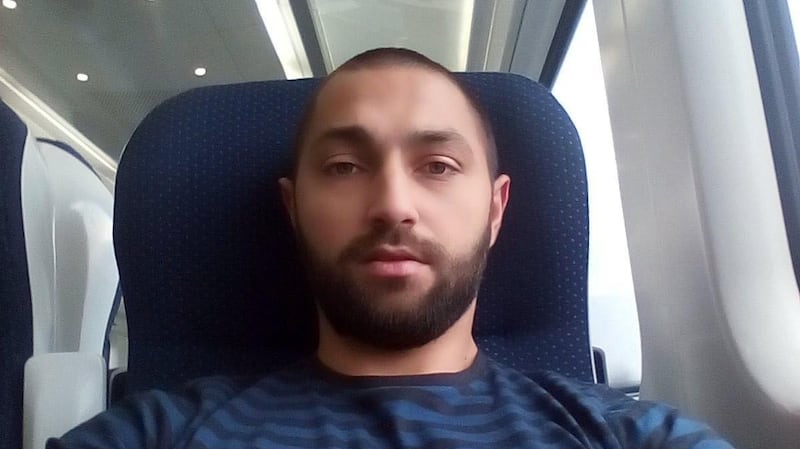
Intention? Check.
Ashling Murphy was stabbed 11 times in the neck which, Lawlor said, showed the necessary intention to kill or cause serious injury that grounds a murder charge. The family was very upset when her blood-soaked white T-shirt, barely resembling a T-shirt after more than a year in a Garda evidence bag, was produced.
Because an accused has a presumption of innocence, the onus was on the prosecution to prove its case beyond reasonable doubt. The defence reiterated several times that the investigation team arrested and detained another man on January 12th. That man, the jury heard, was released without charge and eliminated from Garda inquiries.
The defence also focused on the fact Jenna Stack, having viewed an identity parade, identified a man, who was not Puska, as the man she saw crouched over the girl along the canal. Stack told the jury she was mistaken in that identification but not in her evidence in court.
The defence had Det Chief Supt Patrick O’Callaghan recalled to give evidence about an email sent to the Garda Press Office by an individual claiming to be Ashling Murphy’s murderer. The investigation team were satisfied the sender, a man with mental health and alcohol issues, was not the killer.
When the defence asked the judge to recharge the jury concerning that man, the judge refused, saying the man had “nothing to do with it”. The judge, who was speaking in the absence of the jury, said he regarded the “technique” of “pulling people in from the fringes of a case” as “very dubious” indeed, and something he was determined to eliminate. He could have pointed out a defence is “threadbare”, “as it is in this case”, but while he was sorely tempted to, he had not, he added.
The judge refused to permit the last witness in the trial, a defence medical expert, to give last-minute new evidence along the lines Puska had a liver function issue which, the expert suggested, would affect how long Oxycodone stayed in his system.
In the end, the defence was heavily reliant on Puska’s evidence but the jury clearly rejected his story.
At the outset, Lawlor said the DPP was bringing this prosecution “on behalf of the community”. The random nature of the brutal slaying of Ashling Murphy prompted wide concern in the community about the safety of women undertaking an everyday activity such as walking and running, and many may continue to look over their shoulder as a result.



















